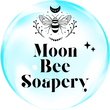Girl Bombs
Impossible de charger la disponibilité du service de retrait
Our specially composed herbal blend offers support for your menstrual cycle, but it can also be savored by anyone, any time. Spearmint leaf infuses the tea with a delicate flavor and aroma, so take some time to relax with a cup of our thoughtfully crafted loose leaf tea.
To Use: Fill tea ball with loose leaf tea and let steep in hot water for 8 minutes. Steeping longer can cause tea to be bitter but xan always be sweetened as desired. Can be used on first day of cycle to the last day to help with cramping.
Contains: Rose Hips (Rosa cannia), Raspberry Leaf (Rubus idaeus), Spearmint Leaf (Mentha spicata), Burdock root (Aretium lappa), Nettle leaf (Urtica Dioica), Black cohosh (Cimicifuga racemosa), Vitex Berry (Vitex agnus castus)
Rose hips are the fruits of the rose.
Rose hips develop on wild roses as the flowers drop off. The rose hip, also called the rose haw, is actually the fruit of the rose. These fruits are one of the most concentrated sources of vitamin C available. Rose hips have a tart flavor and can be used to make jelly, jam, soup or oil, or can be alternatively used to flavor tea. During World War II, the British government used collected rose hips to make rose hip syrup as a source of vitamin C to replace citrus fruits that were impossible to get. Rose hips have a long history of use in traditional medicine.
Raspberry Leaf is recognized for its sweet fruits and pleasant tasting leaves, raspberry has been a cherished plant for hundreds of years. Native to many parts of Europe, North America, and western Asia, Rubus idaeus is an easily cultivated member of the Rose family. Raspberry leaves are generally drunk as a delicious raspberry leaf tea, with a flavor that resembles black tea. Red raspberry leaf is also popular in herbal infusion blends for both its taste and healthful qualities.
Raspberry leaves are among the most pleasant tasting of all the herbal remedies, with a taste much like black tea, without the caffeine. Raspberries were said to have been discovered by the Olympian gods themselves while searching for berries on Mount Ida. The first real records of domestication of raspberries comes from the writings of Palladius, a Roman agriculturist. By Medieval times it had a great many uses, including the juices which were used in paintings and illuminated manuscripts. King Edward the 1st (1272-1307) was said to be the first to call for mass cultivation of raspberries, whose popularity spread quickly throughout Europe. Teas of raspberry leaves were given to women of the Cherokee, Iroquois, and Mohawk nations in North America, and have earned approval of the authoritative British Herbal Compendium.
Vitex Berry- Native to the Mediterranean, Vitex agnus-castus now grows in temperate regions throughout the world. Vitex is often referred to as chaste tree, taking its name from Greek legends associating the tree with chastity and faithfulness. Vitex berry has been used in traditional European herbalism for reproductive support for thousands of years.
Vitex supports physical and emotional health during a woman's menstrual cycle and in the transition into menopause.*Precautions
Vitex berry is not recommended for use with hormonal contraceptives. We recommend that you consult with a qualified healthcare practitioner before using herbal products, particularly if you are pregnant, nursing, or on any medications.
Black Cohosh is a flowering perennial, native to many parts of Canada and the United States. It thrives in old-growth coastal forests and regions of considerable biodiversity.
Actaea racemosa is an herbaceous perennial in the buttercup family. Native to central and eastern North America, black cohosh grows in shaded woodland habitats. Black cohosh root was traditionally employed for its healthful benefits by Native Americans living throughout the plant’s range. Named after its black and twisting rhizome, black cohosh root is typically made into a tea or an extract.
It was a favorite herbal remedy for Native Americans. The name cohosh is from the Algonquian tribe, and means rough, referring to the feel of the rhizome. It was given the name "bugbane" because the flowers have such a strong odor and have been used to effectively repel insects. Other common names include black snakeroot and rheumatism weed.
Precautions
Not for use in pregnancy except under the supervision of a qualified healthcare practitioner. We recommend that you consult with a qualified healthcare practitioner before using herbal products, particularly if you are pregnant, nursing, or on any medications.Persons with allergies to other members of the Asteraceae family chamomile, should exercise caution with Blessed Thistle as allergic cross-reactivity to Asteraceae plants is common. Not for use in persons with kidney disease.
This information has not been evaluated by the Food and Drug Administration. This product is not intended to diagnose, treat, cure, or prevent any disease. For educational purposes only.








